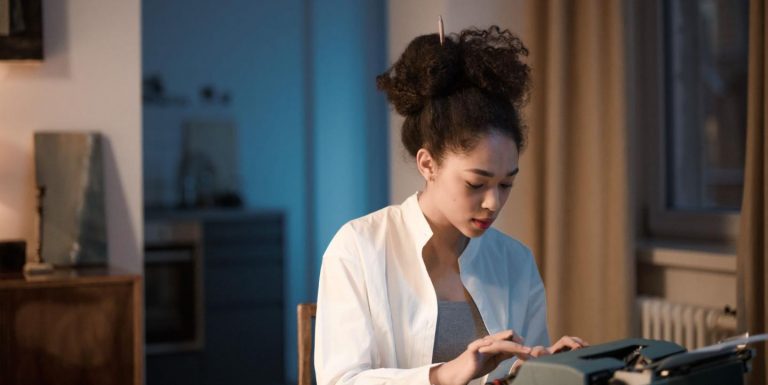
This brand of journalism requires research and creativity, but you can learn all the skills you need.
BY CRISTIANA BEDEI
A feature is an exploration. It informs, inspires and entertains readers by going beyond hard facts and quotes, answering their questions about what is happening around the world.
While it was mostly seen as an article published in newspapers and magazines 10 or 20 years ago, finding a precise definition is more difficult today. Mary Hogarth, a media specialist, educator, and author of Writing Feature Articles: Print, Digital And Online, says that a strong feature should combine multimedia elements that will enhance the audience’s experience and offer a 360-degree perspective of a topic: “It is critical to ensure that content not only has value but that it engages print/digital and online audiences.”
Many freelancers choose feature writing also because it typically pays more. “The more words an editor commissions the more you’ll earn. Research takes time, so try to get several stories out of one topic by tailoring the angle to several non-competing publications,” said journalism coach and lecturer Susan Grossman. That may mean reframing and reselling your story elements at different times, for different audiences, and with different quotes.
The job doesn’t come without its challenges, however. The most common one is developing relevant and viable ideas. “It’s not just finding a topic that’s hard, but finding a topic that lends itself to a full feature and finding sources that are accessible,” said Ottavia Spaggiari, an independent journalist who writes long-forms for The New Yorker and The Guardian, among others.
Grossman noted the problem with generic ideas: “An editor is looking for something that has some time-sensitive element to it, particularly, that looks forward. You have to think of something to hang the story on, and I would say that a news item is an essential component of a feature.”
This brand of journalism requires research and creativity, but you can learn all the skills you need. “The best stories are those you are passionate about. Your job is to build in the answers to any questions your reader may have,” Grossman explained.
As you develop a meaningful narrative, keep your topic and audience in mind. You can use these tips from the three experts to get you started.
Research first
Knowing all your material will make writing an excellent in-depth story easier. “It’s very much juggling the different bits of information, the quotes and the data after you found it all,” said Grossman. “I suggest you don’t start writing until you’ve got all your research together.”
Spaggiari added: “I read all the interview transcripts first, underlining not just the quotes, but also the storylines emerging.” Next, she creates a grid with a list of all her sources. After every interview, she notes her main findings.
Don’t start at the beginning
Grossman compares writing a feature to creating a painting. “You don’t start from the top of the frame and paint all the way through,” she said. “With a feature, I would just put all the different components of the story into a draft, develop them, think about them, research them, address statistics, add your quotes, then look at the whole and think: what is the publication that I intend this story to be for? And then model it in the same style.”
The formula is already there in the media outlet you want to target, so you don’t have to do a lot of creative thinking. Just mirror their style.
Know your target audience
It’s all about what the audience wants and needs to know.
“First, it is imperative to know your market,” said Hogarth. “Secondly, I recommend thoroughly researching a target publication by reading several back issues and trawling through the socials to gain an in-depth perspective of its core editorial themes or pillars, and the audience.”
Writing concise, well-structured features that reflect the house style of your target publication is also critical. “I always advise taking a show-not-tell approach when pitching to editors by including a headline and stand-first to demonstrate you can adopt the tone and style of the magazine or newspaper,” Hogarth added.
Build a timeline
When working on longer, more resource-intensive pieces, you might have so much material that it’s hard to figure out what your original angle or story was in the first place. Spaggiari, who has worked on different narrative and investigative features, suggests building a timeline – on a document or a spreadsheet.
“I like using [spreadsheets]. For example, I write the date in a cell, and then the event next to it,” she explained. “The timeline is the guiding light when writing a long-form piece.”
If you’re dealing with complex issues it helps to retrace a story and build a narrative arc. “It allows you to understand the topic well and not miss any passage in the story — and also to explain it to your readers,” Spaggiari added.
Question your struggle
“If you’re struggling to write a feature story, you need to ask yourself: does it need to be written? What is the outcome of you writing the story? Who will be interested or affected by it?” said Grossman.
If you can’t identify why it’s important or what it is you want to say, she added, then your struggle is that you’re not sure about whether this feature is worth writing. It’s almost as if, until you can feel enough passion and energy, it’s not ready. “You might have an idea, put it to one side, and then wait and see if something happening in the news is about the issue in your feature,” Grossman suggested.
Think about what’s happening in the public eye that can make your story timely and relevant. “I’ve had plenty of students and clients who’ve had really great stories accepted by a newspaper, perhaps, but not published. And then the editor on one occasion came back and said: ‘Ah, this just happened, this week is a perfect time for your story!’” said Grossman. “But really, it’s your job to do that.”
________________
 Cristiana Bedei is an Italian freelance journalist with international experience.
Cristiana Bedei is an Italian freelance journalist with international experience.
Courtesy: IJNET (Published on Sep 22, 2022)